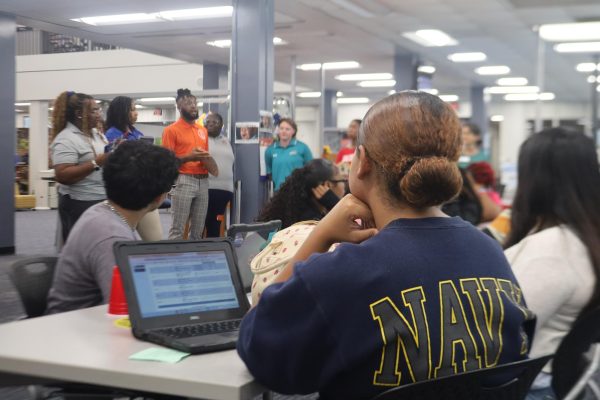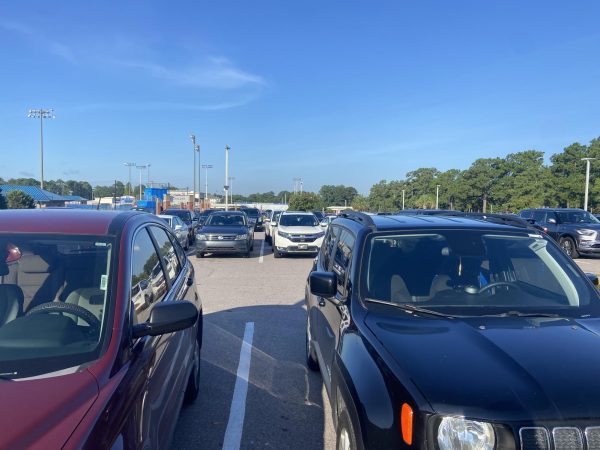Walled Up: Why The Government Shutdown was Unnecessary
800,000. That’s how many employees, both critical and non-critical, were directly effected by the shutdown. 50,000. That’s how many were called back without pay in the middle of the shutdown. One. That’s how many people were directly responsible for the longest government shutdown in U.S History.
What Is a Government Shutdown?
To understand the problem, it’s necessary to cover the basics. A government shutdown, according to thebalance.com, is when non-essential federal programs are closed. This happens when congress fails to appropriate funds.
Basically, everything considered not critical to the government is cut off from cash flow, but only when congress can’t decide what to spend cash on properly.
In the normal budget process, the funds are appropriated by September 30th of the fiscal year to follow. But if that doesn’t happen on time, a funding resolution is enacted. If congress can’t agree on a resolution, the shutdown occurs, creating a break down of the budgeting process.
What’s At Stake?
Naturally, federal employees, both essential and non-essential, aren’t paid during a shutdown. Airport security, parks and museums, science, research and public health are all affected during a shutdown. Food inspection and aid to those in need can only operate on a state and local level, depending on the funding left over. In fact, people on Native reservations are essentially left to dry because funding has completely ceased. In fact, a program that’s supposed to feed 90,000 natives was shutdown. The financial situation has left the population rather vulnerable to things like loan sharking.
But if for some reason, that wasn’t enough to concern someone, and instead the question of how this effects people on a personal level exists, don’t worry: Social security checks weren’t effected at all. In fact, most offices remained fully functional during the shut down.
However, hundreds and thousands of law enforcement and judiciary workers were left without pay. This includes those working for the FBI, the Drug Enforcement Administration, Bureau of Prisons, Customs and Border protection, the Coast Guard, the Secret Service, and the list goes on and on.
Immigration court was even shut down as a result, in true irony. The I.R.S ended up having only 12% of its 80,000 employees still working, and with the previous plan having covered the end of last year, it was unsure as to what the plan was once the government resumed funding.
Critical things such as the Violence Against Women Act was defended. This funds programs made to assist and support survivors of domestic violence, stalking, and sexual assault, and as a result expired in December.
It’s effects like this that can’t go ignored, especially when it’s for groups that rely on the funding in order to get by.
Building Walls
The biggest question people have is why was the government shutdown in the first place? short answer is that: the democrats held government hostage in a refusal to fund the border wall. The longer answer is that since the beginning of his campaign, President Donald Trump has been anti-illegal immigration. His solution to his is to build a border wall; and so the democrats have countered this with alternative solutions. When it came time to draw funding, he requested about 0.11% of federal funding for the wall, and so causing a disagreement. Over the entire period, he continuously negotiated with the Democrats for funding, creating an endless loop. While the democrats argued that the problem on the border isn’t as serious as Trump implied, Trump argued the opposite, and went as far as to declare national emergency in order to fund the wall.
The trouble with this, though, is the fact that the democrats aren’t wrong. In fact, despite Homeland Security Secretary Kirstjen Nielsen’s claims that “everywhere we put up a wall, illegal immigration has reduced 90 to 95 percent,”data from the CBP shows the number of people agents have caught crossing have decreased in many states– not just states with borders in them. Just as well, the sectors with walls in them actually have the highest amount of apprehensions, with the highest being in the Rio Grande sector. As of fiscal 2018, there were 52,000 apprehensions with an estimated 5,000 unaccompanied minors. Meanwhile, the sectors with little to no walling actually has the lowest amount of apprehensions, though not because of successful crossings, but because of the natural rocky and mountainous terrain as well as the Chihuahuan Desert making the area difficult to cross to begin with. In fiscal 2018, the CBP apprehended only 8,000 people in those areas.
Granted the primary reason the crossings on the more natural parts of the border is because of the terrain, it’s important to recall that President Trump’s plan calls for a total coverage of the border. That being said, the numbers and cost get more complicated as you go across that natural terrain.
On top of which, putting the wall to the side, most illegal immigration isn’t even from border crossing– it occurs from visa expiration. Usually, immigrants who come on working visas end up staying for too long– whether intentionally or accidentally, their visas expire and the documentation usually takes a long time to process, so these workers end up without any papers and so considered ‘illegal.’
Another problem is that a great deal of the people getting apprehended usually qualify for asylum but aren’t aware. And so they’re wrongfully jailed. To qualify for asylum, they need to cite a reasonable source of fear– that is, fear for their livelihoods. These people aren’t usually aware that they’re able to qualify for asylum, or even in some cases the documentation required to fill out.
Cash to Burn
All in all, with the ‘no tolerance’ stance the Trump administration has taken on immigration, and the fact that simply deporting these people is overly expensive on its own (ICE direction estimates a cost average of $12,500 for each adult person), the wall is a waste of money. It’s a waste of money because considering the areas that the wall is already built have the most amount of apprehensions, it’s a useless endeavor. On top of which, most illegal immigrants are here due to having expired visas.
So then, what’s the alternative solution?
The democrats have proposed using the funding to instead implement technology along the border at border checks in order the better filter through who is an asylum seeker and who is not, as well as investing more into the border patrol themselves rather than a wall. While this isn’t necessarily thought out, comparably, it’s better than trying to spend cash trying to build a wall that will still take up an absurd amount of U.S funding in order to maintain and protect, especially considering the terrain the border has to run through that crosses the more mountainous and rocky territories.
Your donation will support the student journalists of Richland Northeast High School. Your contribution will allow us to attend conferences, purchase equipment and cover our annual website hosting costs.











